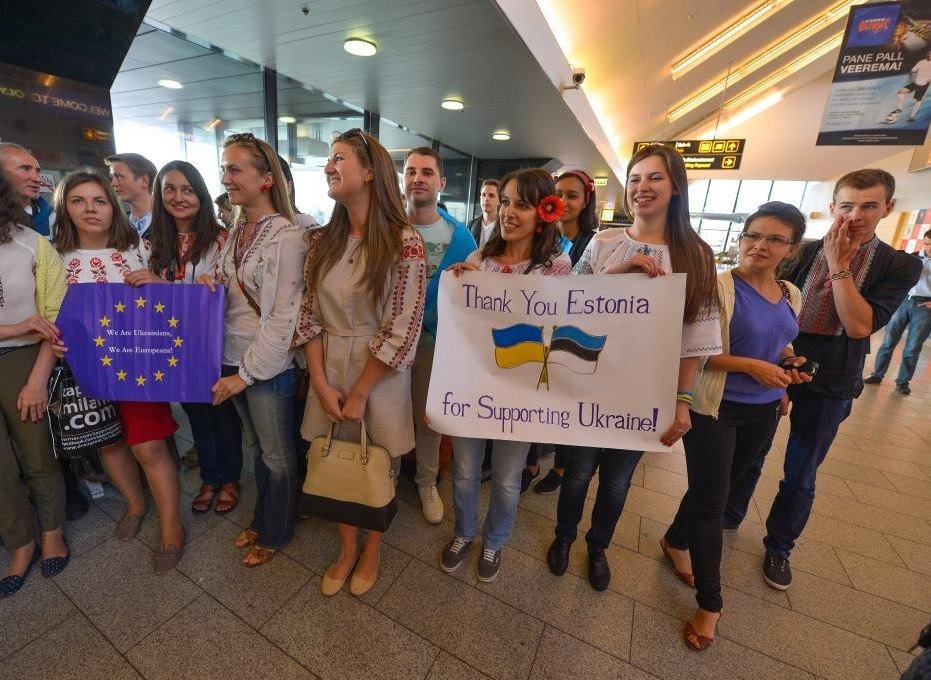For years, Estonian investment banker Jaanika Merilo has focused her activities on Ukraine and Russia. Sharing Estonia’s e-governance experiences with Ukraine, she is helping the country restart and defeat deeply rooted issues.
This article is published in collaboration with e-estonia.
I
Olga Bielkova, a member of the Ukrainian parliament, has said that the key to fighting corruption (among the main problems in Ukraine) lies in e-governance. Do you agree?
For some time I have been evangelising Estonian e-governance in Ukraine and working with Bielkova, so this topic is a personal and important one for me. Ukraine has severe problems with corruption, justice and “game rules”. Transparency International puts Ukraine in the 144th place out of 177 countries in the Corruption Perception Index. The place in the Ease of Doing Business Index is 112th out of 189 countries, due to a complicated tax system and legislation that lends itself to various interpretations.
E-society solutions would certainly help reduce corruption. You cannot offer a bribe to a computer. However, to make this change happen, you would need support from the highest levels, persistence and time. To root out the corruptive mentality that has been a part of society for decades is a complicated task and there are no quick wins.
Vladimir Groisman, Ukraine’s deputy prime minister responsible for e-governance, has turned to Estonia’s experiences through your NGO, called Center for Ukrainian European Development and Integration. How realistic is it to expect that Ukraine will get to where Estonia is with its e-solutions, and what timeframe are we talking about?
For Ukraine, we need to take into account that they are in many ways where Estonia was 20 years ago. They have internet banking, but low internet penetration, no 3G network covering the country, no legislation to support e-governance such as data protection and ID signature laws, and no clear standards or countrywide e-solutions.
This means the road is long, especially for a country of 45 million people. In Estonia, all e-services are based on an obligatory ID card. Implementing this in Ukraine will take a lot of time, even if we don’t consider the time required for building trust and creating demand for e-solutions. In Estonia, e-voting started in 2005, and now a third of the population casts their votes electronically. Habits and trust take time to form. The right time to start in Ukraine was yesterday. It’s already too late, but it’s better to talk about the need to go forward now more than never.
Together with the E-governance Academy, we are currently in the process of helping Groisman’s team map the possibilities of using Estonian experience and solutions.
If we’re talking about developing technologies on a national scale, how many services in Ukraine are digital today?
Ukraine has some technical solutions, such as ID signature, but many different service providers and no countrywide standards. The result of this is that while the technical solution exists, different state institutions use different formats, most of them don’t use anything at all, and institutions are not obliged to accept a digital signature (it’s not equivalent to a written signature). It’s a big mess.
Also, there’s no concept of a digital society – what services would the country need to develop, what are the priorities etc.
However, there are very progressive, privately owned online banks. For example, PrivatBank (owned by the governor of Dnepropetrovsk region, Ihor Kolomoyskyi) recently was given the award for innovation in banking and technology by The Banker magazine. The same bank was one of the first in the world to develop an Android-based ATM solution.
IT solutions and their functioning have a big impact on the business environment and foreign investments. How many European and global investors are looking at Ukraine at this moment?
Some regions in Ukraine are currently de facto in a state of war, and investors naturally dislike uncertainty of any kind. So investment decisions are more driven by the state of national security, problems with corruption and the inability to know if the justice system will protect you. In fact, you can be certain that it won’t.
Petro Poroshenko, Ukraine’s new president with a countrywide mandate, brings hope that the situation is stabilising. On one hand, investors need stability and a democratic business environment; on the other hand, the biggest profits are made in times of change. I think that with new reforms and European support, investors will be looking more towards Ukraine. Especially in the field of technology, which doesn’t depend that much on the political situation and where Ukraine has immense potential.
Does Ukraine need a restart in the field of technology and how should it happen? The current state in Ukraine seems like a good time to change course.
The tech sector in Ukraine is developing fast – even the 2008-2009 crisis didn’t stop its momentum. Currently IT/tech is one of the five biggest export fields, employing over 100,000 specialists and having a market value of over USD5 billion. These numbers put Ukraine at the top of the Central and Eastern European market, and Gartner considers Ukraine one of the top 30 outsourcing countries in the world.
The problem is that while the IT sector is growing by 30% annually, most of the services are related to outsourcing. This does not add value in the long term. There’s also an additional threat of Ukraine’s wages reaching levels that are too high compared with competitors like India, China or Eastern Europe. It’s important to create value-added products and services – to create successful startups, lure R&D centres to Ukraine and build products.
I
Cover photo: Ukrainian youth organisation in Tallinn. Photo by Andres Putting/Delfi.

